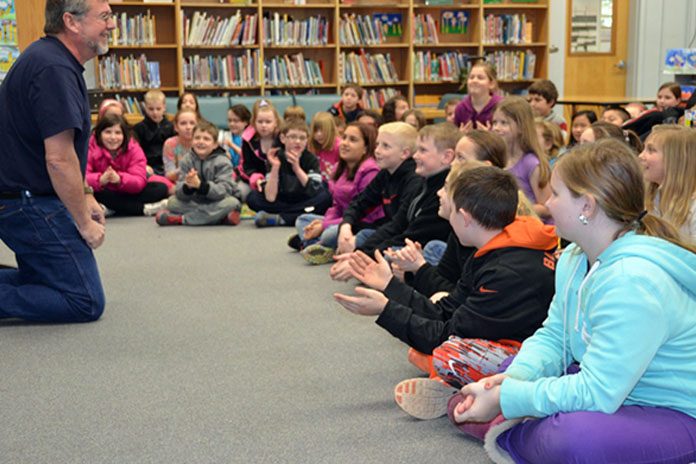
The old song, “School Days” could use a little updating. It’s not just “reading and writing and arithmetic” that kids are learning as they head back to the classroom. You can add agriculture to the list. Oregon’s chapter of Agriculture in the Classroom is adapting to the times and expanding its reach, now impacting more students than ever.
“This year, we will reach more than 100,000 teachers for the seventh year in a row, so the program definitely has a huge impact in Oregon, “ says Jessica Jansen, executive director of Oregon Agriculture in the Classroom (AITC). “We’re in all 36 counties and reaching more schools, more teachers, more students every year.”
AITC’s goal is to increase awareness, knowledge, and appreciation of agriculture among teachers and students, kindergarten through high school.
“Students today aren’t connecting the farm to their food and fiber,” says Jansen. “That’s where we come in. We try to make those connections because when those students grow up to be consumers or policy makers, they will have a strong understanding in agriculture and a base to fall back on.”
The key to the program is reaching the teacher first. AITC helps teachers incorporate agriculture into their everyday curriculum by providing resources throughout the year that range from books to ready-made lesson plans that involve hands-on and applied learning. It hasn’t been difficult getting teachers on board.
“We often get a thank you from teachers who wonder where these resources have been,” says Jansen. “Our program works because the teachers impact and influence the students. Over the course of a teacher’s career, they’ll see thousands of students, depending on what grade and how long they teach. We hope, through training and resources, those teachers will have a career-long impact on students.”
AITC provides nearly a dozen different kits that allow teachers to easily work agriculture into the classroom. Seed germination kits teach kids how crops grow. Another kit contains different by-products of four common agricultural commodities like corn and beef. Instead of a teacher needing to go out and find those by-products themselves, everything is provided and ready to go.
Today’s classroom and the delivery of lessons has changed dramatically. AITC has kept up.
“Just five years ago, we were providing a lot of videos on VHS tapes, now we don’t have any left in our lending library,” says Jansen. “Most classrooms don’t have the mechanism to play those tapes anymore. So we vet YouTube videos, develop our own, and share those links with teachers.”
 One of the hallmarks of the program is the Grown in Oregon Commodity Map. Even that is going to get a high tech facelift expected to launch in January.
One of the hallmarks of the program is the Grown in Oregon Commodity Map. Even that is going to get a high tech facelift expected to launch in January.
“We are making the digital version of the map interactive, so students can click on different regions of the state to learn about the characteristics of that region,” says Jansen. “There will also be a fun component using virtual reality. We have taken a 360 degree camera out this summer to different farm operations and harvests. Students will be able to use a virtual reality headset to experience the videos. We’re excited because some students have never been out to the farm and don’t really have the ability to visit one. We want to showcase the diversity of Oregon agriculture, which is what our Grown in Oregon map does, but now we bring it to life.”
Get Oregonized, a history book focusing on the state’s people, natural resources, and agriculture, remains a popular resource for teachers. About a thousand new copies will be distributed this year to add to the 12,000 copies already in use.
But it all goes back to daily instruction. Ag in the Classroom works agriculture into the routine subjects of English, math, science, and history. For example, if kids are going to learn about diameter and circumference in math, teachers use a pumpkin, giving them a natural tie into how farmers grow pumpkins.
Have the lessons from AITC made a difference in the lives of the students? Dawn Alexander, who teaches fifth grade at Tom McCall Elementary in Redmond, asked her class.
“As soon as I asked, hands were shooting up all over the place. They said, ‘yes, I know more about the importance of our ecosystems and that we really need to take care of them, that we need to be careful about losing farm ground so we have land to feed the growing population’. One student said people didn’t have to be a farmer to be involved in agriculture.”
Now a 30-year tradition, Oregon Agriculture in the Classroom is ready to go back to school.









